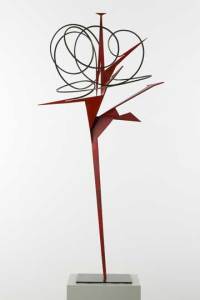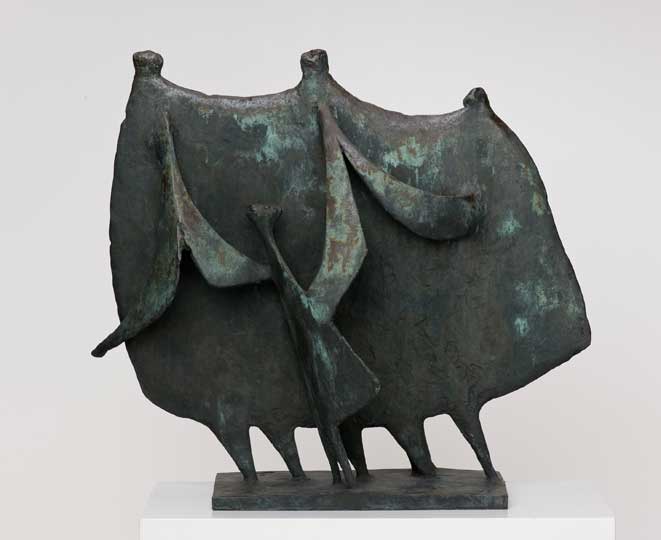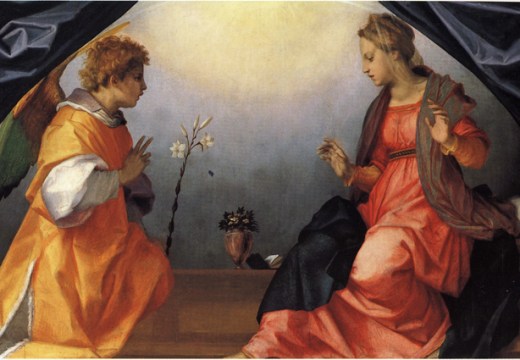A new exhibition at the Sprengel Museum Hannover will revisit the hitherto rather overlooked art of the immediate post-war period. ‘Those early years: British And German Art After 1945’ presents the 1950s work of the British ‘Geometry of Fear’ artists – Lynn Chadwick, Kenneth Armitage, and their peers – in a new context, alongside paintings and sculptures by their German contemporaries. We spoke to the curator, Carina Plath, to find out more.
Click here for a gallery of highlights from the exhibition
Can you tell us a bit about the exhibition?
This exhibition takes a new look at the art of the 1950s, a period long regarded as petit bourgeois and conservative. Now the time has come to reconsider the specific qualities of the decade’s sculptures and paintings. The exhibition focuses on works by British and West German artists who lived through the time when Lower Saxony was still a British Zone. Around 130 examples from the high-class collection of the Sprengel Museum Hannover are complemented by international loans.
What makes this a distinctive show?
It is distinctive in representing artworks that have long been banished to museum stores while the art of the 1960s stole the show. 1950s art was not appreciated by a generation of curators whose parents liked this art and its ambience. Now with a younger generation, a fresh view is possible. The show further reveals that British and German artists have much more in common than one might think. This is especially true of the so-called ‘Geometry of Fear’ artists (a term coined by critic Herbert Read) such as Lynn Chadwick and Kenneth Armitage, and the Informel sculpture of Otto Herbert Hajek and Emil Cimiotti, among others.
How did you come to curate this exhibition?
The collection of Margrit and Bernhard Sprengel – who founded the Sprengel Museum – has outstanding examples of sculpture and graphic works from the period. The masterpieces of classic modernism in their collection are better known, but the Sprengels collected contemporary art of exceptional quality after the Second World War.
What is likely to be the highlight of the exhibition?
We will unite three models from the competition to design the monument to the ‘Unknown Political Prisoner’ – an international tender from 1951–2 by the ICA, in which more than 3500 artists participated. We present the winning model by Reg Butler (loaned by Tate), and two models by German sculptors Bernhard Heiliger and Hans Uhlmann. Also, the visitor will discover the work of British sculptors Barbara Hepworth, Kenneth Armitage and Lynn Chadwick, who are not well known here and have only recently gained more visibility.

Untitled (1956), Hans Uhlmann © VG Bild-Kunst, Bonn 2014. Photo: Michael Herling / Aline Gwose / Benedikt Werner, Sprengel Museum Hannover
And what’s been the most exciting personal discovery for you?
Besides the highlights I have already named, I think it must be the fantastic work of the German sculptor Hans Uhlmann, who made drawings of such high quality from the 1940s through the 1970s. We are lucky to be able to show a large body of his work from a private collection.
What’s the greatest challenge you’ve faced in preparing this exhibition?
As always, working with a low budget – the usual reality for German regional museums. We were not able to get bigger loans from far afield, so we looked into German, Danish, Dutch and Swiss Collections – and found really interesting pieces. Working on a low budget can have advantages because you have to be more inventive.
How are you using the gallery space? What challenges will the hang/installation pose?
The exhibition will unite very different styles and atmospheres – from the more classical display of works by Henry Moore and Barbara Hepworth, to discursive parts on the competition for the ‘Unknown Political Prisoner’, to the minimal installation of early work by Francis Bacon and Eduardo Paolozzi. At the end of the exhibition, a film of a current work by Gustav Metzger will also be shown.
Which other works would you have liked to have included?
I tried very late to present the sculpture ‘Bett’ by Joseph Beuys – a work from 1950 of a female figure clamped in a vice. It is a wonderful statement by the young artist who learned about sculpture and studio practice under Ewald Mataré, and a sort of claustrophobic situation that reflects the feeling of post-war life. I haven’t thought of it because Beuys in this context is not an obvious choice, but a good essay by John-Paul Stonard for the catalogue brought this work to my attention.
‘Those early years: British And German Art After 1945’ is at the Sprengel Museum Hannover from 14 June–28 September.
Related Articles
First Look: ‘Art and Optimism in 1950s Britain’ at mima (Alix Collingwood)
Interview: Polly Bielecka discusses ‘Sculpture in the Home’ at Pangolin (Beatrice Schulz)
Unlimited access from just $16 every 3 months
Subscribe to get unlimited and exclusive access to the top art stories, interviews and exhibition reviews.












![Masterpiece [Re]discovery 2022. Photo: Ben Fisher Photography, courtesy of Masterpiece London](http://www.apollo-magazine.com/wp-content/uploads/2022/07/MPL2022_4263.jpg)
Has the Fitzwilliam lost the hang of things?